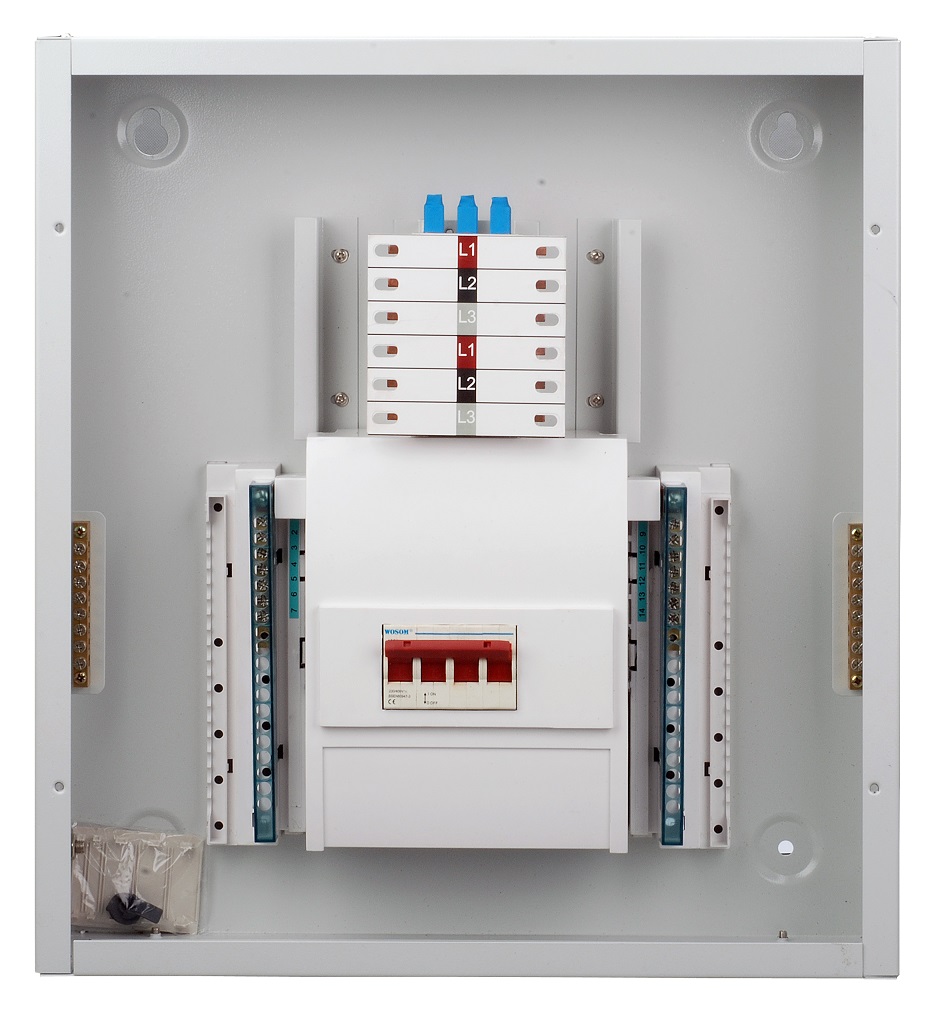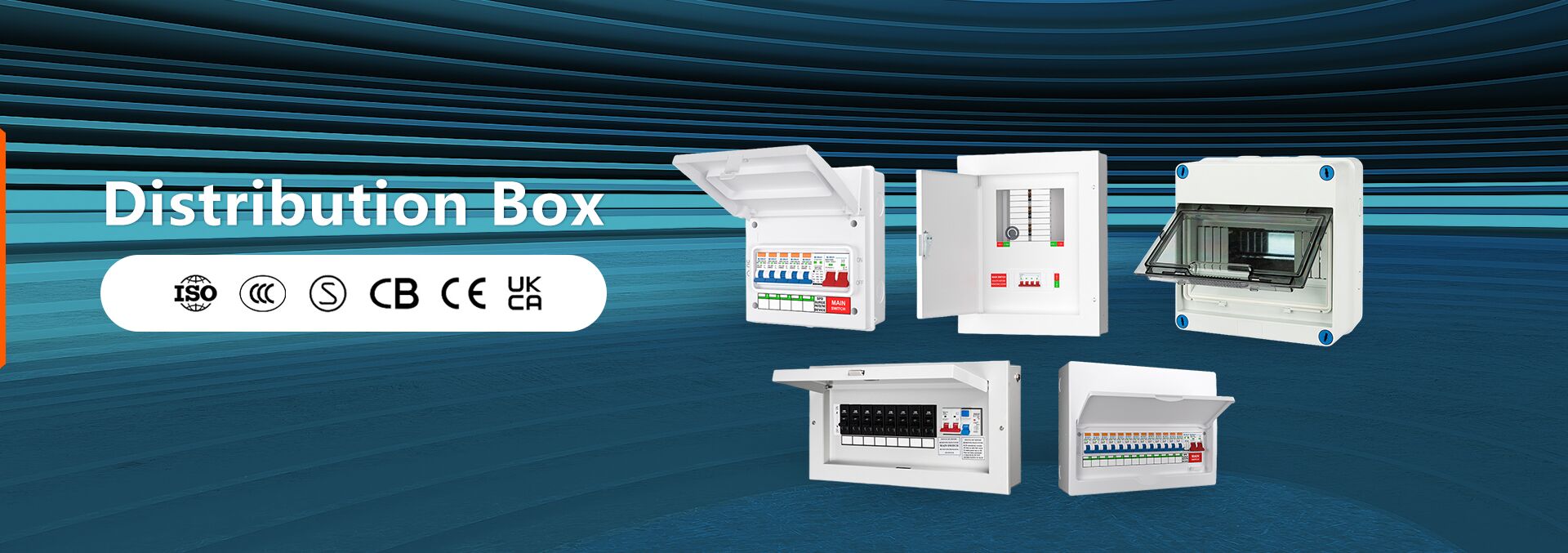Next: What is the difference between SPN and TPN distribution board

In the intricate tapestry of modern infrastructure, electricity flows as the very lifeblood of commerce and comfort. At the nexus of this vital flow stands the distribution board – a seemingly unassuming metal enclosure that, in truth, orchestrates the entire electrical symphony of your premises. For businesses, industrial facilities, and even larger residential complexes, the stakes are higher, and the demands more prodigious. This is where the TP&N distribution board emerges as an indispensable protagonist.
This comprehensive guide will unravel the complexities of three phase distribution boards, illuminating their fundamental purpose, dissecting their critical components, and drawing a clear distinction between them and their single-phase counterparts. Our objective is to equip you with the perspicacity required to make an astute decision regarding your electrical power distribution.
At its core, a TP&N distribution board (Three Phase and Neutral) is the command center for electrical power in environments demanding robust and continuous energy delivery. Unlike the more common single-phase systems found in most homes, a three phase board is engineered to manage a trio of alternating current (AC) phases, alongside a neutral conductor.
Imagine three distinct waves of electricity, each precisely offset by 120 degrees from the others. This harmonious staggering ensures that at any given moment, at least one phase is at its peak, providing a constant and unwavering supply of power. This is the three phase distribution board in action. In the UK, for instance, this often translates to a formidable 415V between phases, with 230V available between any single phase and the neutral.
A TP&N distribution board is not merely a collection of wires; it's a meticulously designed apparatus comprising an incoming main switch, a robust busbar system, and an array of protective devices. It acts as the central nexus where high-voltage incoming power is safely divided and distributed to various circuits, each tailored to power specific machinery, lighting arrays, or other high-demand loads.
The exigency for a TP&N distribution board transcends mere convenience; it is a fundamental requirement for environments with substantial power consumption and critical operational continuity. Here's why this formidable piece of electrical engineering becomes an absolute imperative:
Firstly, consider high power demands. Industrial machinery, colossal HVAC systems, high-speed production lines, and expansive data centers are not merely energy-hungry; they are voracious. A standard single-phase supply simply cannot sate their prodigious appetites. A three phase distribution board is designed from the ground up to handle these gargantuan current loads, ensuring that your most vital equipment operates without succumbing to power starvation.
Secondly, the efficiency dividend is profound. Three-phase systems are inherently more efficient in transmitting and utilizing electrical energy. By distributing the load across three phases, the current on any single line is attenuated, leading to diminished energy losses and reduced heat generation within the wiring. This translates directly into tangible long-term operational cost savings – a compelling argument for any discerning business owner.
Thirdly, the stability of power supply is unparalleled. Because the three phases are perpetually staggered, a TP&N distribution board delivers a continuous, ripple-free current. Unlike single-phase systems where voltage momentarily dips to zero with each cycle, the unwavering supply from a three phase distribution board is critical for sensitive electronics, large motors, and automated systems that demand an unblemished power profile. This constancy mitigates wear and tear on equipment, extending its operational lifespan and enhancing overall productivity.
Fourthly, there's the invaluable aspect of power interruption resilience. In many configurations, should one phase encounter an anomaly, the remaining two phases can often continue to supply power, albeit at a reduced capacity. This inherent redundancy prevents a complete cessation of operations, offering a crucial lifeline for mission-critical processes where even a fleeting power outage can incur catastrophic financial or operational consequences. This is a stark contrast to the single point of failure inherent in single-phase systems.
Furthermore, for any enterprise relying on large industrial motors, a TP&N distribution board is non-negotiable. These formidable prime movers, ubiquitous in manufacturing and heavy industry, necessitate a three-phase supply for efficient starting and operation. The three-phase power inherently generates a rotating magnetic field, enabling motors to commence operation more smoothly and with greater torque, obviating the need for cumbersome and often inefficient external starting mechanisms.
Finally, the strategic foresight of future expansion cannot be overstated. Even if your current power demands are modest, installing a three phase distribution board during initial construction or renovation provides an invaluable reservoir of electrical capacity. This pre-emptive investment future-proofs your infrastructure, accommodating subsequent business growth, technological upgrades, and the integration of new, more power-intensive equipment without the disruptive and exorbitant costs associated with a belated electrical overhaul. It’s an investment in your enterprise's enduring vitality.

Typically fabricated from robust sheet metal – often CRCA (Cold Rolled Close Annealed) steel with a durable powder coating, or even high-grade engineering thermoplastics – this outer shell serves as the primary guardian. It meticulously shields the delicate internal electrical components from the vicissitudes of dust, moisture, physical impact, and unauthorized access. Its ingress protection (IP) rating, a crucial metric, denotes its resilience against environmental factors.
This is the primary device that permits the safe disconnection or connection of the entire distribution board from the main power supply. It is typically a multi-pole switch, often a 4-pole variant, capable of simultaneously isolating all three live phases and the neutral conductor, a critical safety feature for maintenance or in emergency scenarios.
These are the veritable arteries of the distribution board – a series of highly conductive metallic strips, predominantly crafted from copper or aluminum. The main incoming power is channeled through these busbars, which then serve as the central conduits for distributing electricity to the individual outgoing circuit breakers. In a TP&N distribution board, you will invariably find three live phase busbars and a dedicated neutral busbar, ensuring a structured and efficient flow of current.
For a TP&N distribution board, three-pole MCBs are commonly employed, simultaneously disconnecting all three phases to protect the connected three-phase loads.
Learn More: MCBs Guide: Types, Functions & Electrical Safety Tips
These are the guardians against earth faults, detecting minute leakages of current to earth and swiftly cutting off power to prevent electric shock and fire hazards. In a TP&N system, you might encounter four-pole RCDs or a configuration of multiple single-pole RCBOs, each providing granular protection to individual circuits, whether three-phase or single-phase.
Learn More: RCBO Ultimate Guide
These devices act as lightning rods for your electrical system, diverting sudden spikes in voltage – perhaps from lightning strikes or switching operations – away from sensitive electrical equipment, thereby precluding costly damage.
Learn More: What is the difference between a circuit breaker and a surge protector?
The neutral bar provides a secure and reliable connection point for all outgoing circuit neutral conductors, which then connect back to the incoming neutral. Similarly, the earth bar serves as the common termination point for all protective earth conductors from outgoing circuits and the distribution board enclosure itself, ensuring the entire system is safely earthed – a non-negotiable aspect of electrical safety.
The intricate network of cables and conductors that interconnect all these components – must be of an appropriate current rating and insulation class to ensure safe and reliable operation.
|
Feature |
Single Phase with Neutral (SPN) |
Three Phase with Neutral (TPN) |
|---|---|---|
|
Number of Phases |
Single Phase |
Three Phase |
|
Number of Live Wires |
1 |
3 |
|
Neutral Protection |
Typically protected by a double pole breaker along with the live wire |
Usually for isolation only, live wires are protected (true 4-pole breakers needed for neutral protection) |
|
Typical Voltage |
120V / 230V AC |
415V AC or higher |
|
Power Transmission |
Single waveform, voltage fluctuates to zero, not continuous power supply |
Three waveforms separated by 120°, continuous, balanced power supply, voltage never drops to zero |
|
Load Capacity |
Low power loads, limited capacity |
High power demands, significantly higher capacity |
|
Typical Applications |
Residential, small commercial |
Commercial, industrial, data centers, heavy machinery |
|
Efficiency |
Lower efficiency under high loads |
Highly efficient, balanced load |
|
Interruption Resilience |
Single-phase fault leads to complete interruption |
Other phases can still work if one phase fails, offering some resilience |
|
Installation & Maintenance |
Simpler |
More complex, requires professional knowledge and load balancing analysis |
|
Initial Cost |
Lower |
Higher |
|
Long-Term Value |
Suitable for basic needs |
Higher long-term value for large setups (efficiency, reduced downtime) |
In conclusion, TP&N distribution boards are tailored for environments with substantial power requirements and the need for three-phase power distribution, offering enhanced flexibility and capacity. In contrast, single-phase distribution boards are suited for settings with lower power demands, providing a straightforward and cost-effective solution for standard electrical distribution needs.
Learn More: What is the difference between SPN and TPN distribution board

LAIWO's TP&N Metal Distribution Boards are the robust and reliable backbone your commercial and industrial electrical systems demand. Designed for the most demanding environments, our TP&N boards are finished in a sleek RAL7035 white, offering a contemporary aesthetic that complements any professional setting. They operate flawlessly on AC380V/415V 50/60Hz systems and are built to handle significant loads, with options for maximum loading currents up to 125A (100A) or 250A.
Enhanced Features:
Section Neutral & Earth terminals fitted both sides
Fully enclosed 125A/250A busbar system
Complete shrouding for main incomer and terminals
Removable gland plate for ease of cable entry
laiwo electrical is a one-stop solution for all your electrical needs including surge protectors, miniature circuit breaker, earth leakage protection devices and switched sockets. If you have additional questions or need assistance, please feel free to contact the customer service team. Give us a call and we'll have a team of professionals answer your questions!
INQUIRY NOW